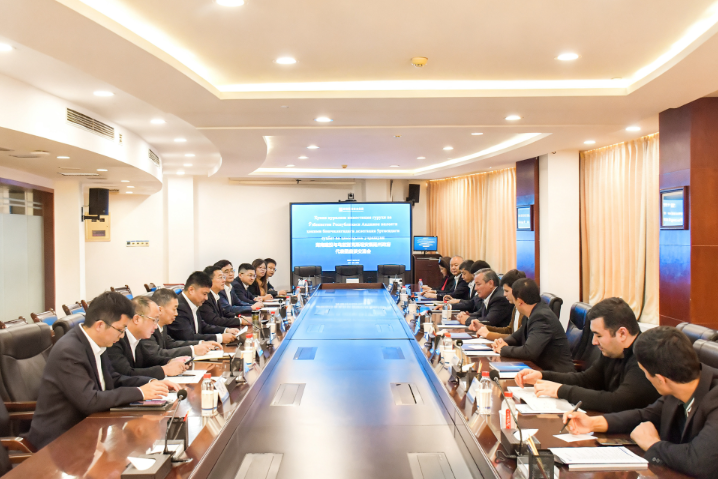HNRB’s efforts to build Obigarm-Tagikamar Road Section
The Obigarm - Tagikamar Road Section (Km 0+000-30+217) in Tajikistan, implemented by the First Branch of Hunan Road & Bridge Construction Group Co., Ltd. (HNRB), a subsidiary of Hunan Construction Investment Group (HCIG), is 30.1 km long, with a construction period of 1,200 days.

The project is an important part of the “Belt and Road” Central Asia Economic Cooperation Corridor and a national strategic project of Tajikistan. After completion, it will strengthen the connectivity of Tajikistan, make Tajikistan an important transit channel in Central Asia, and promote the local economic development.
HNRB has given play to its own advantages to build a “road of friendship” between China and Tajikistan.
In foreign countries, faced with unfamiliar environment and new challenges, project builders are exploring how to implement project with high quality and efficiency and better serve the “Belt and Road” construction.
On March 5, 2021, HNRB was awarded the contract of the Obigarm-Tagikamar Road Section project. This provides a chance for HNRB to explore a new market, and is also the first project for the First Branch to go global. In order to ensure the smooth progress of the pre-project preparation work, after careful investigation and consideration, a vanguard team with similar construction management experience was sent to the construction site for the preparatory work.
At that time, the COVID-19 pandemic was raging around the world. With the threatening epidemic and unknown future, the vanguard team chose to move forward without hesitation. They arrived safely in Duschanbe, the capital of Tajikistan on March 19, 2021 via multiple countries.

Contract negotiations, contract signing, on-site inspections, market research, cost calculation, and scheme planning were immediately carried out. But due to the unfamiliar local market environment and the epidemic, it’s extremely difficult to advance the preliminary work of the project.
“The biggest problem at that time was lack of workers, materials, and machinery caused by the epidemic,” said Sun Fenghua, project manager. But they had strong faith in overcoming the numerous difficulties.
They spared no effort to advance the project work while ensuring epidemic prevention and control. Domestic follow-up personnel were unable to arrive on time, so each member of the vanguard team took multiple positions. As materials and equipment couldn’t enter the site in a timely manner, they found resources in the local market and tried their best to rent equipment temporarily to start the on-site work.
As a key control engineering project, tunnels have received much attention from the beginning. “If the tunnel is delayed for a day, the overall progress of the project will be delayed for a day. If there are conflicts between other works and tunnel construction, the tunnel is given priority,” said Sun Fenghua multiple times at monthly meetings.
There are a total of 2 tunnels in the project which were partially excavated. However, the excavated hole bodies of the tunnels, including the dimensions, were not completely consistent with the design. This meant that the tunnel bodies of the project required secondary excavation. Some parts needed to be further excavated, and some over-excavated parts needed to be filled, which was not easier than the works of excavating a new tunnel.
The previously excavated sections were reinforced with anchor rods and steel meshes, indicating that the geological conditions were not good and there was a significant safety risk for secondary excavation. After multiple discussions and repeated research, the project department decided to backfill first, form a platform inside the excavated tunnel body, and carryout construction in three steps to promote the tunnel works.
What’s worse, there was a large landslide that occurred many years ago in the excavated section of the Karagach Tunnel No. 2. Besides, the trolley formwork and excavation equipment used for pouring the secondary lining back then were buried under the landslide. Due to a length of over 30 meters and a large volume of the landside, the surrounding rocks were very fragmented. Secondary landslides occurred repeatedly during the landslide treatment process, which brought great pressure to the project progress and safety production.
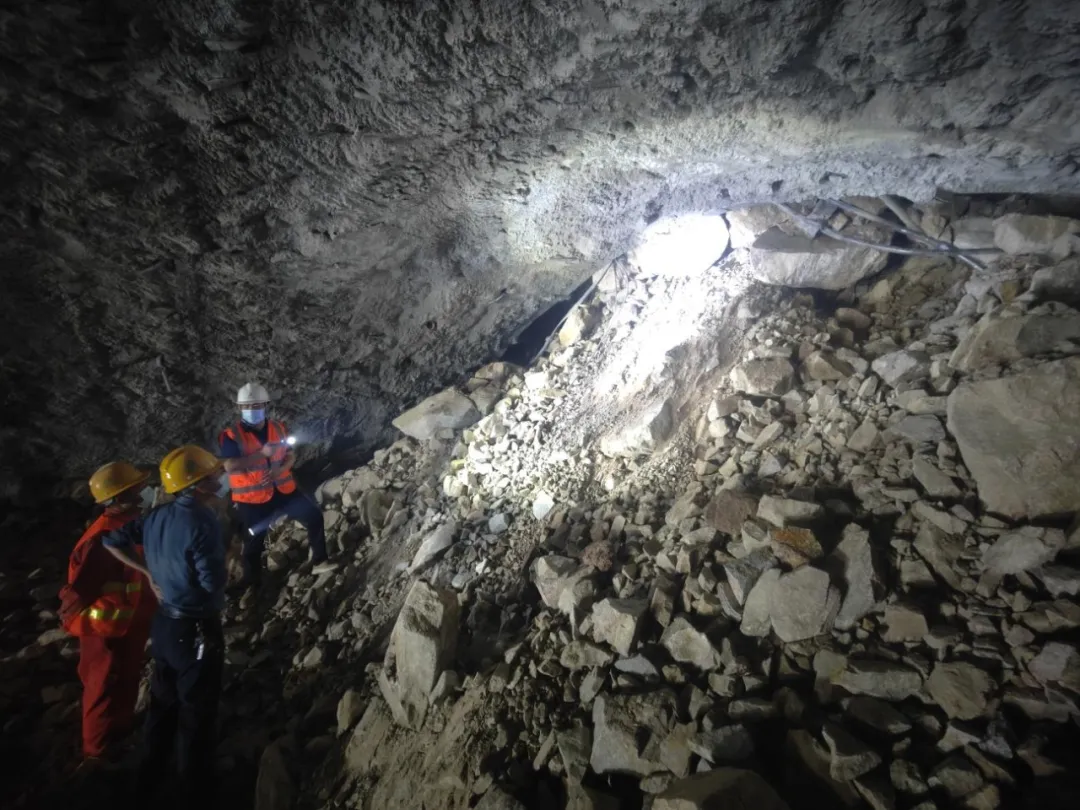
“The geological condition was too complex. During the period of dealing with the landslide, everyone was highly nervous and constantly on guard against the occurrence of a second collapse,” said Yang Qiang, deputy production manager of the project.
In order to safely and effectively deal with the existing collapse, a special technical team was established for tunnel construction. They conducted a detailed investigation on the site, held multiple special meetings, and invited Zhou Yinglin, a domestic tunnel expert, to the site for guidance. An effective treatment plan was finally determined, and tunnel casing technology was introduced from China. After 5 months, the disposal of the landslide was completed safely and recognized by the supervising owner.
Due to many unforeseeable unfavorable factors in the early stage, the project was progressed slowly for a period of time. If the output value was not achieved, the measurement couldn’t keep up and the project funds couldn’t be guaranteed, which in turn affected the normal construction and further delayed the progress. The project seemed to have fallen into a dead cycle.
Sun Fenghua said, “During that period, we lacked sufficient money and materials, the rented equipment was gradually requested to be withdrawn, and local workers also began to strike. I felt very anxious and was unable to sleep.”
In the face of difficulties, the project department didn’t give up. On the one hand, it has strengthened contact with the owner and supervisor, and sought financial support from the subsidiary and HNRB to alleviate the project’s fund pressure. On the one hand, deployment meetings and special meetings for tunnel construction were held to assign construction tasks and optimize construction organization. By back scheduling, setting target tasks, and signing responsibility letters, the construction tasks were strictly implemented.
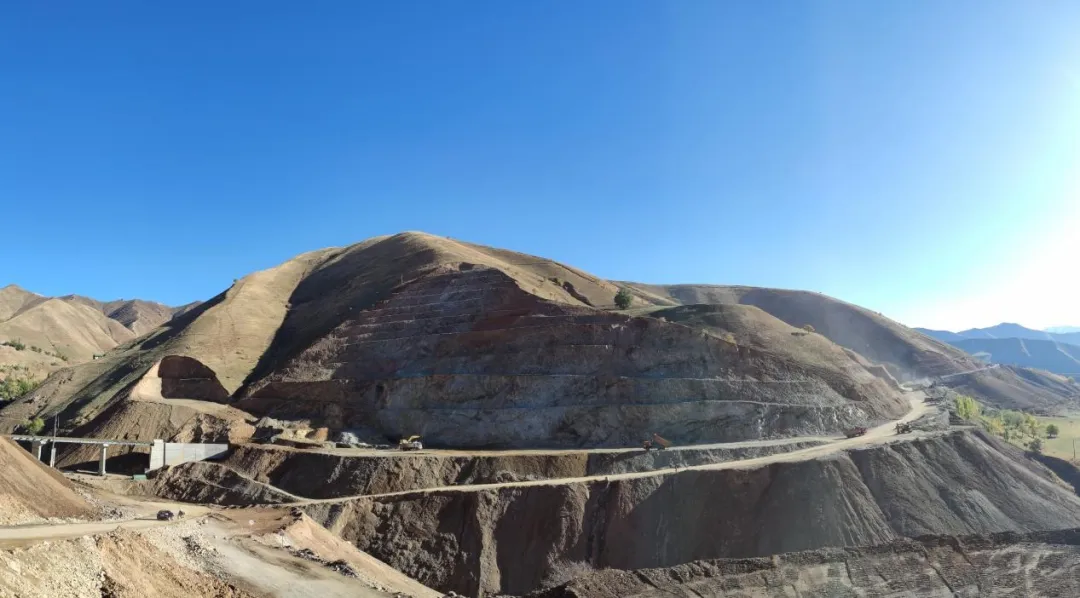
With the joint efforts of all employees, the project was advanced quickly with important milestones completed one after another. It is expected to open to the traffic in the near future.
On May 17, 2023, Tunnel No.1 was completed.
On July 29, 2023, the first prefabricated T-beam of the project was erected.
On September 4, 2023, Tunnel No.2 was completed;
On September 28, 2023, the lower test road was paved with asphalt.
On March 26, 2024, all the main works of Tunnel No.1 were completed;
On April 9, 2024, the deck of Bridge No. 1 was concreted.
The project received high recognition from the owner for the quickest progress in the construction of the entire road. On September 7, 2023, project manager Sun Fenghua was granted the National Road Development Contribution Award by the Ministry of Transport of Tajikistan.
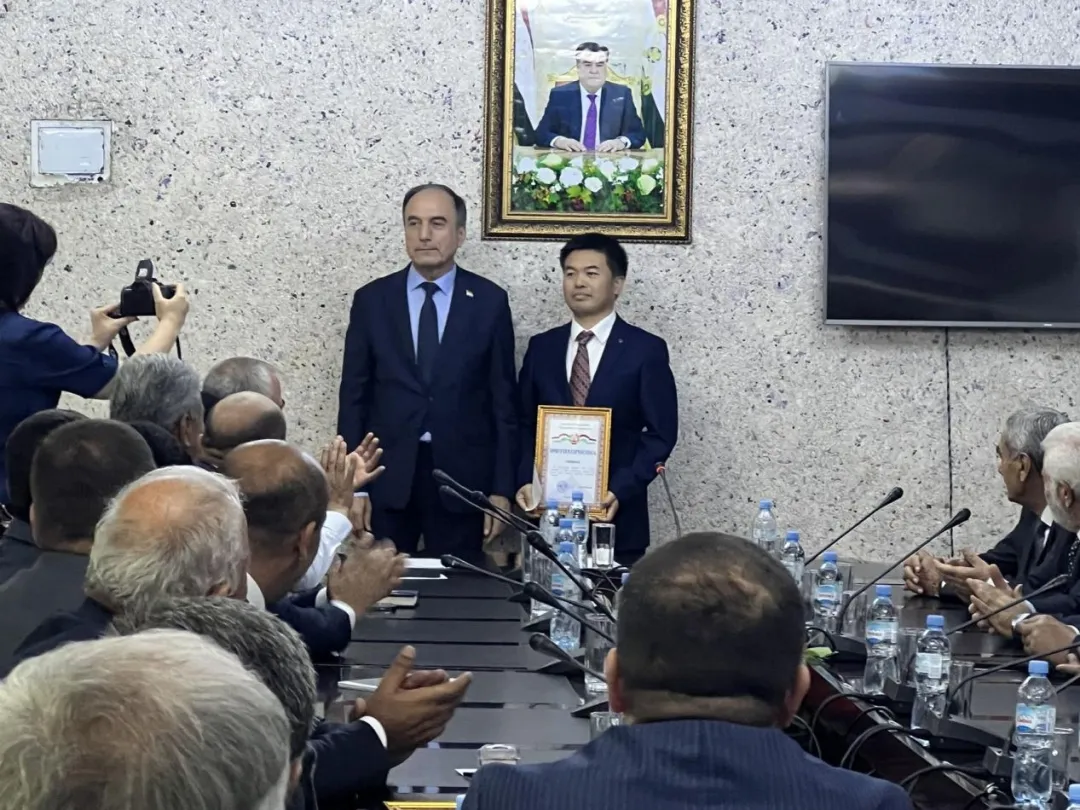
The original design of the project included 182,000 cubic meters of gabion retaining walls, 58,000 cubic meters of reinforced concrete retaining walls, and 14,000 cubic meters of rubble concrete retaining walls, which required a large number of laborers for their construction, but laborers are very scarce in the local area.
“It is necessary to optimize the original design, otherwise these works are difficult to complete within the construction period,” said Xiong Tao, chief engineer of the project.
Through the on-site investigation, optimization plans were proposed and discussed with the supervisor, owner, and design party. “This process was very difficult, and the local people had completely different ideas. At first, they didn’t accept our plan, especially the owner. After repeated communication and analysis, they began to change their ideas and agreed to try,” said Xiong Tao.
After more than a year of effort, the volumes of the gabion retaining walls, reinforced concrete retaining walls and rubble concrete retaining walls of the project were optimized to 136,000, 22,000, and 7,000 cubic meters respectively through measures such as adjusting the horizontal and vertical curves, and filling soil instead of building retaining walls, effectively improving project benefits.
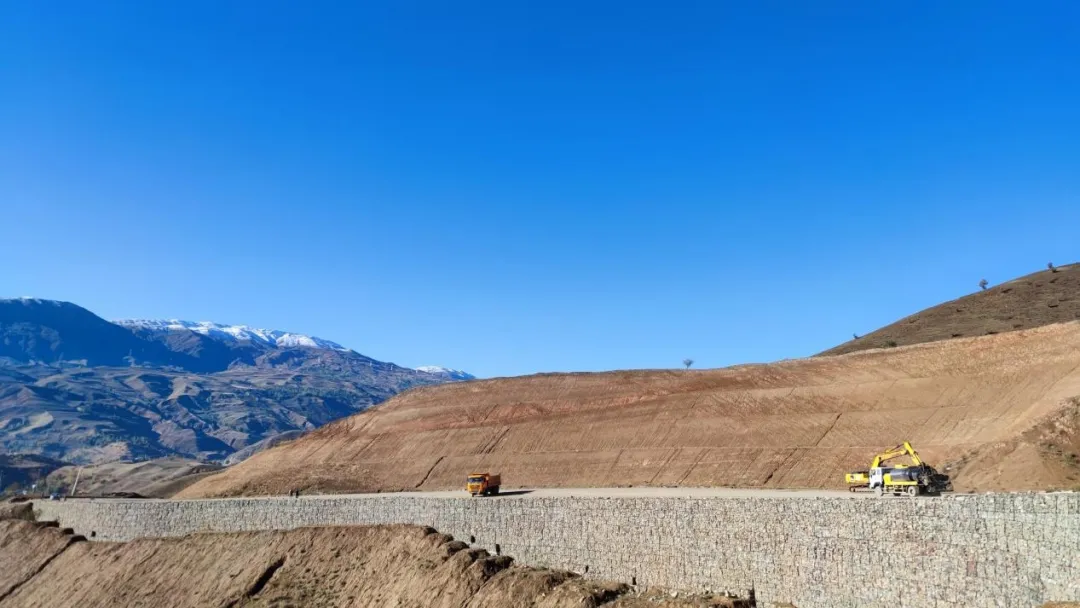
Luo Naizhu, deputy manager of the project machinery and materials, placed more emphasis on reducing costs by utilizing self-produced sand and gravel materials. There is a 3.3-kilometer-long tunnel as well as stones on the roadbed in the project. The excavated materials could be fully utilized. Luo Naizhu said, “There is 230,000 cubic meters of concrete and 50,000 cubic meters of asphalt concrete pavement. Self-produced sand and gravel materials can greatly reduce material costs with quality controlled.”
In the local area, sand and gravel materials are often produced by crushing river pebbles, and there is no experience in using machine-made sand and gravel materials. Through repeated communication and verification of experimental data, the supervisor and the owner finally agreed to use the self-produced sand and gravel materials. At present, there are 3 gravel yards in the project site, with 2 for processing tunnel slag and roadbed stones, and 1 for processing river pebbles by the riverside. The sand and gravel materials required for making concrete and asphalt concrete in the current project are basically self-produced.
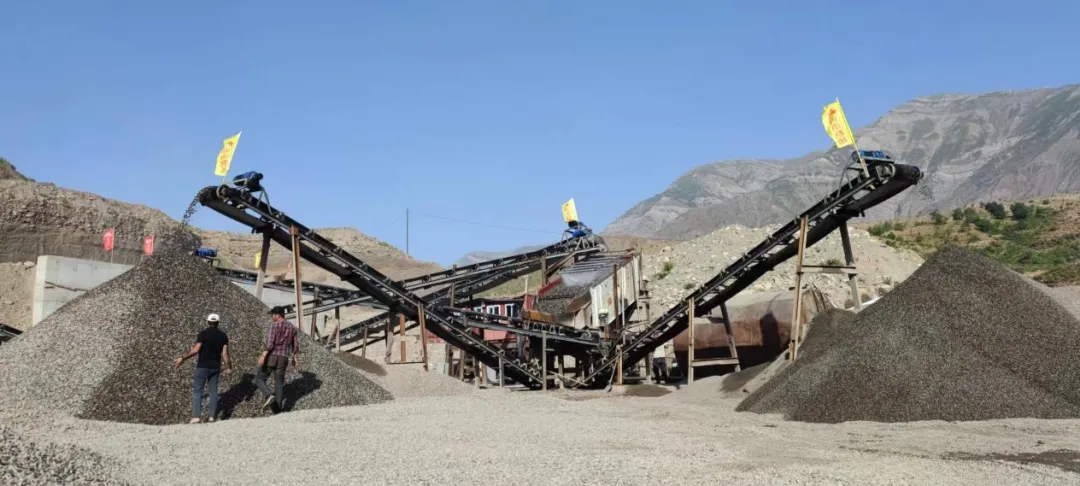
Although there are now many difficulties and challenges, such as tight schedule, the project team understanding the local language, technology, and business operation has become mature and powerful in the three years of project construction. In the subsequent construction, the project team will continue to sweat blood to overcome difficulties, contributing to the construction of the “Belt and Road”.

